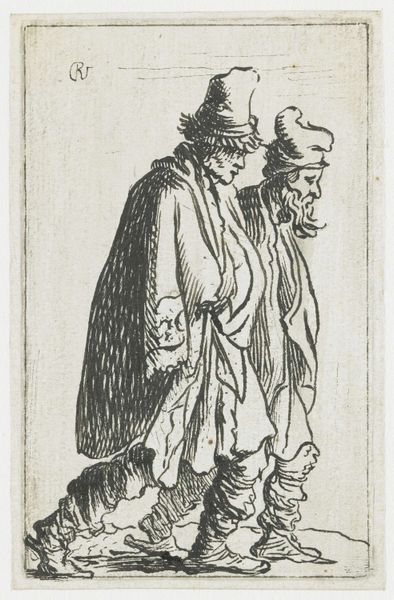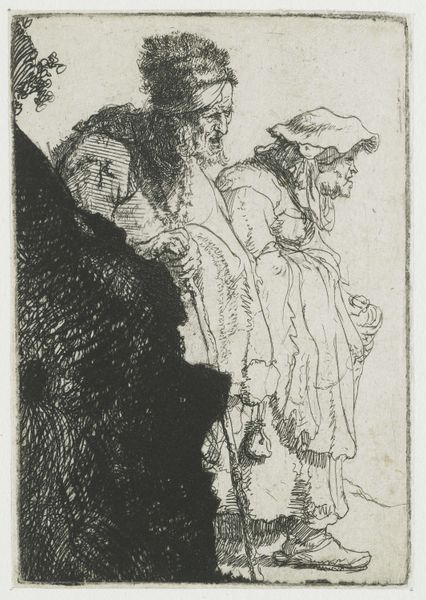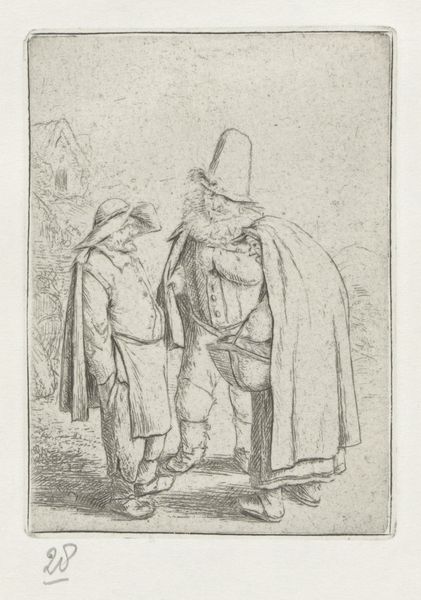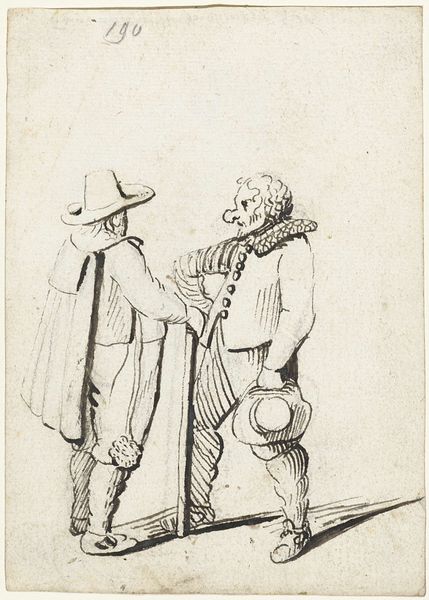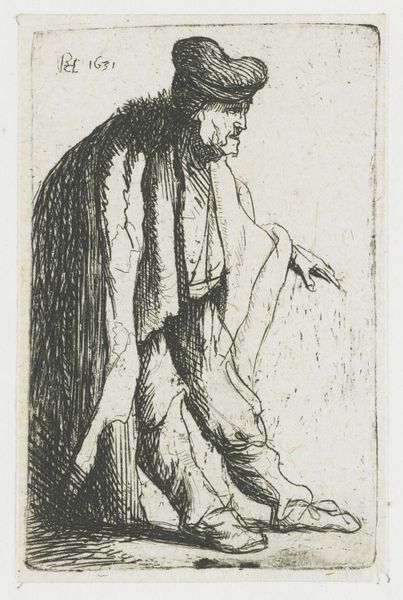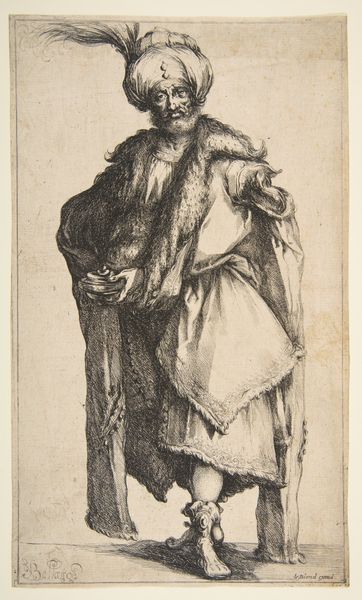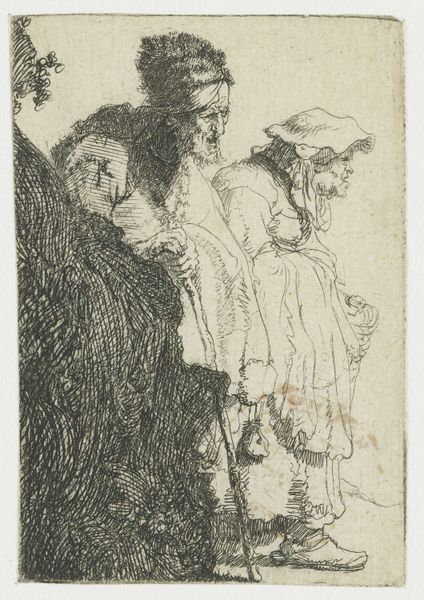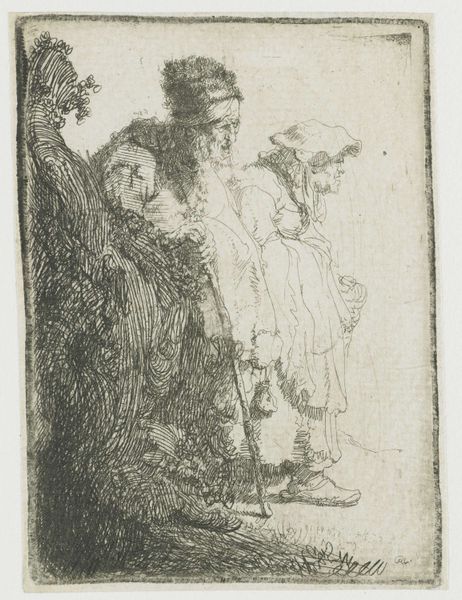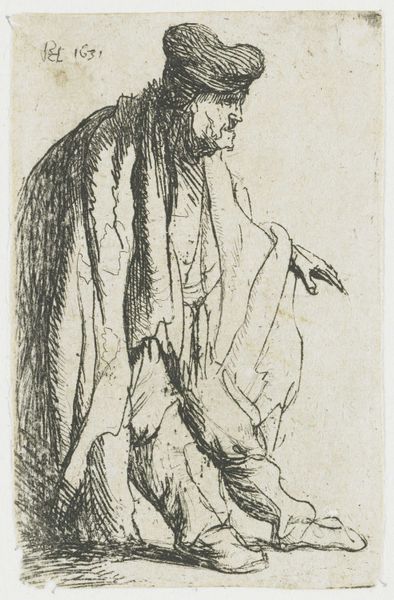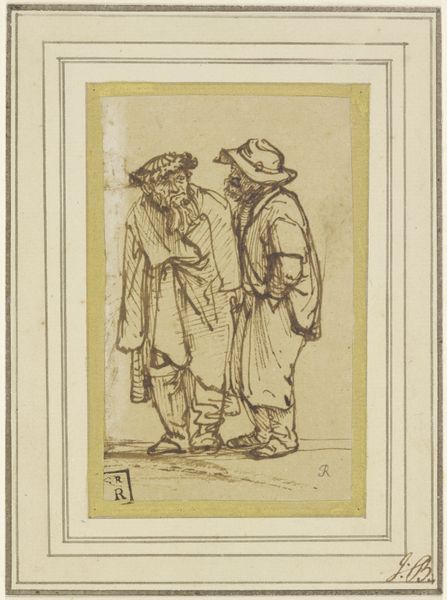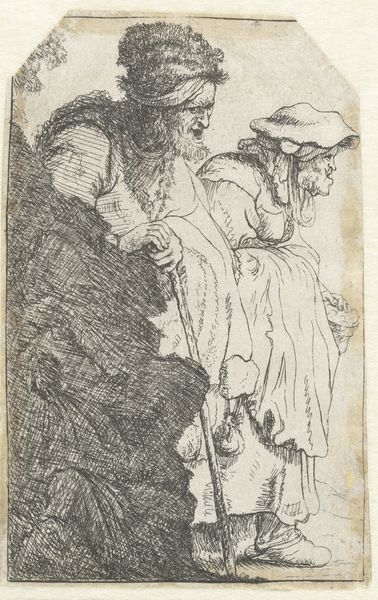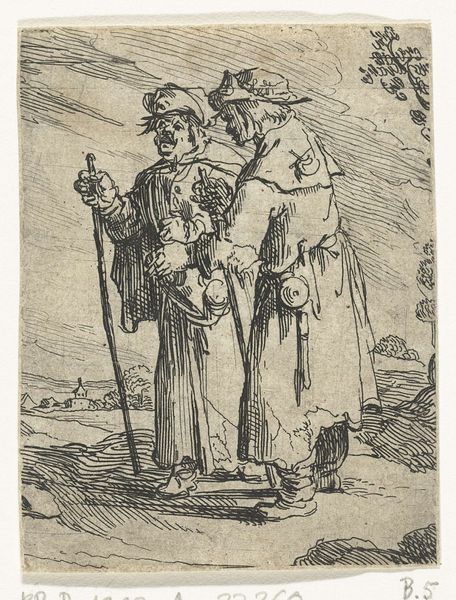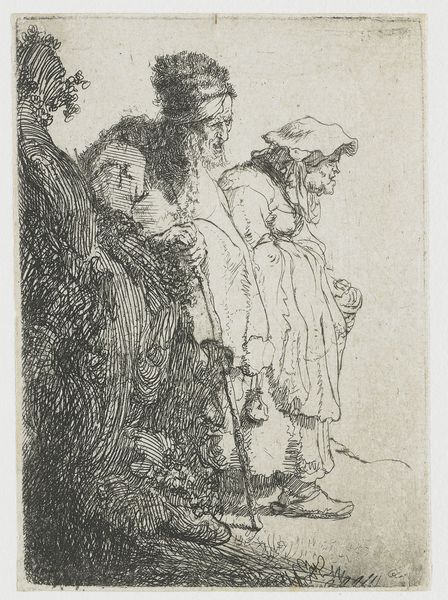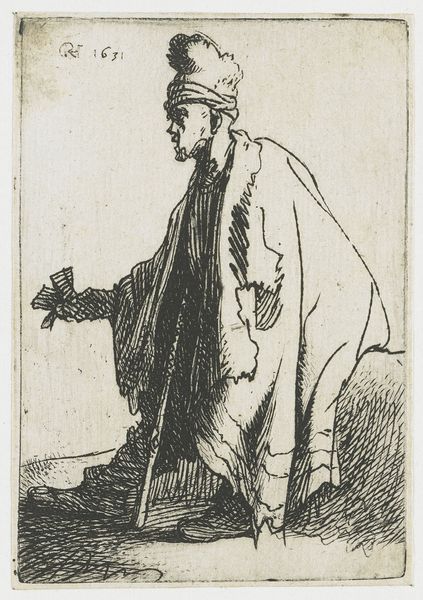
drawing, print, etching
#
portrait
#
drawing
#
ink drawing
#
baroque
# print
#
pen sketch
#
etching
#
figuration
#
line
#
genre-painting
#
realism
Dimensions: height 93 mm, width 60 mm
Copyright: Rijks Museum: Open Domain
Rembrandt van Rijn made this etching of Two Beggars. In 17th-century Netherlands, social structures were undergoing significant shifts with the rise of a merchant class and increasing urbanization, Rembrandt's choice to depict beggars speaks volumes. The image creates meaning through the beggars' tattered clothing, downcast expressions and the way they seem to be moving together, perhaps suggesting shared hardship or reliance on each other. This work reflects the artist's interest in the margins of Dutch society during a time of great economic expansion and the establishment of institutions like the Dutch East India Company. We can imagine that the figures are a silent commentary on the uneven distribution of wealth. Did Rembrandt critique the institutions of art? He may have challenged idealized representations in art. By researching economic records and social commentaries from the time, we gain a deeper understanding of Rembrandt's social consciousness. This work’s meaning is contingent on the social context in which it was made.
Comments
rijksmuseum about 2 years ago
⋮
Rembrandt’s rapid progress as a printmaker is easy to see in this group of poor wretches. The seated woman is still somewhat crudely executed, but the beggar woman with a gourd and her male companion already testify to greater mastery of the technique. The little prints of a man and a woman are etched in the finer style that Rembrandt was to develop later.
Join the conversation
Join millions of artists and users on Artera today and experience the ultimate creative platform.
